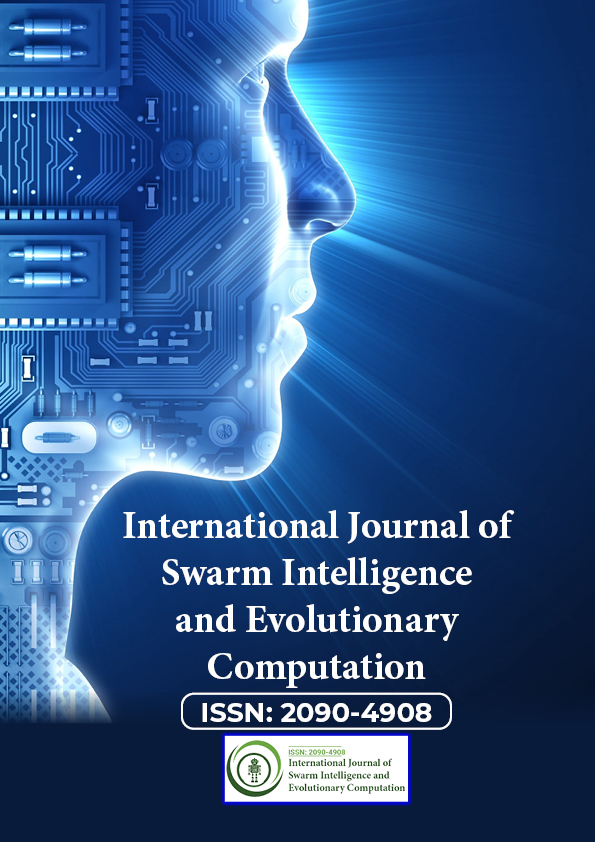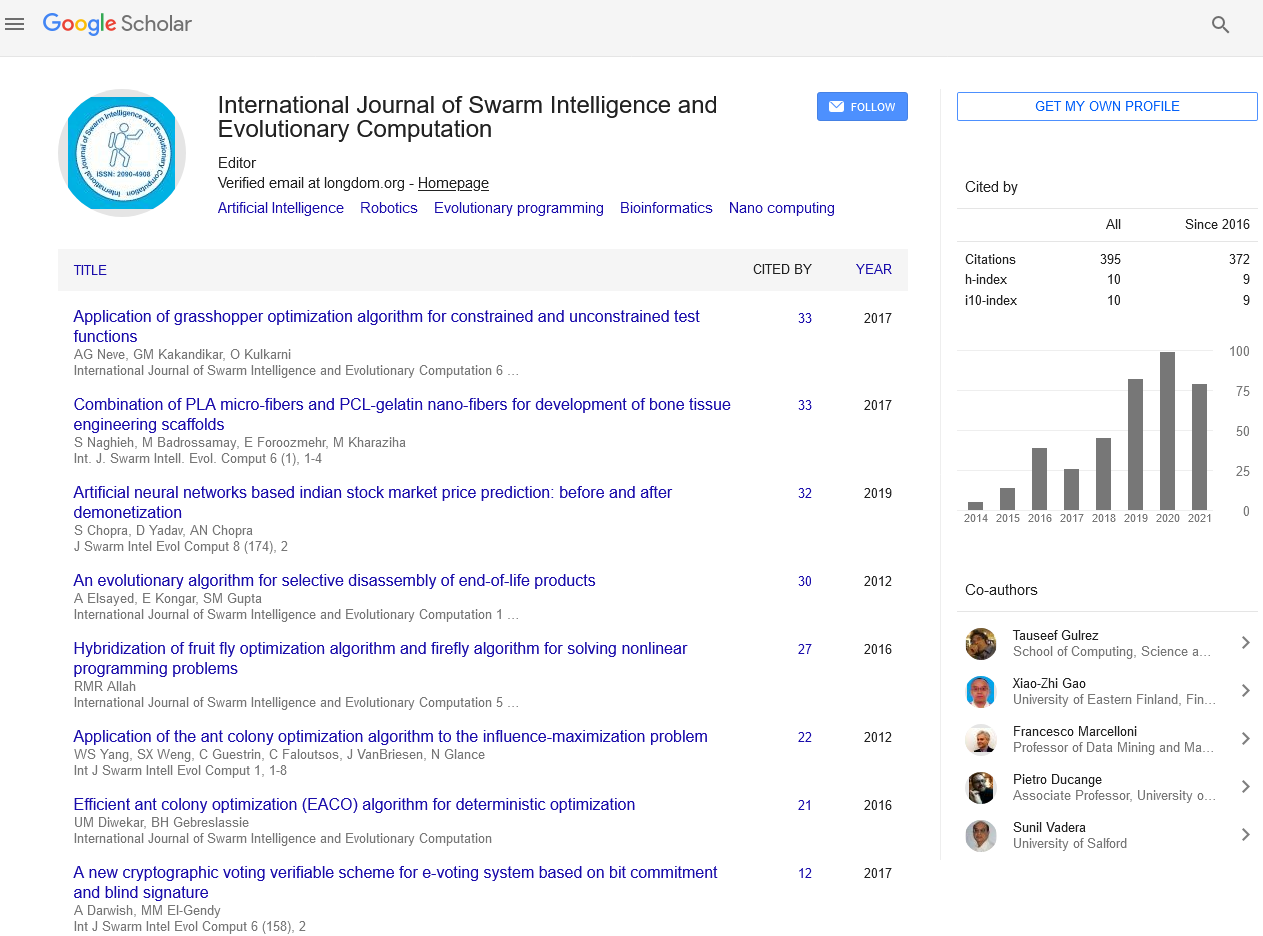Indexed In
- Genamics JournalSeek
- RefSeek
- Hamdard University
- EBSCO A-Z
- OCLC- WorldCat
- Publons
- Euro Pub
- Google Scholar
Useful Links
Share This Page
Journal Flyer

Open Access Journals
- Agri and Aquaculture
- Biochemistry
- Bioinformatics & Systems Biology
- Business & Management
- Chemistry
- Clinical Sciences
- Engineering
- Food & Nutrition
- General Science
- Genetics & Molecular Biology
- Immunology & Microbiology
- Medical Sciences
- Neuroscience & Psychology
- Nursing & Health Care
- Pharmaceutical Sciences
Commentary - (2023) Volume 12, Issue 1
Application of Artificial Intelligence Technology in Agrifood Sector
William Aaron*Received: 21-Dec-2022, Manuscript No. SIEC-23-19865; Editor assigned: 23-Dec-2022, Pre QC No. SIEC-23-19865 (PQ); Reviewed: 07-Jan-2023, QC No. SIEC-23-19865; Revised: 16-Jan-2023, Manuscript No. SIEC-23-19865 (R); Published: 25-Jan-2023, DOI: 10.35248/2090-4908.23.12.292
Description
In recent years, the use of Artificial Intelligence (AI) in agriculture has become more evident. To increase its yield, the industry must overcome a variety of challenges such as inadequate soil testing, disease and pest infestation, the demand for big data, low output, and a knowledge gap between farmers and technology. The flexibility, high performance, accuracy, and cost-effectiveness of AI are the main concepts in agriculture.
Agriculture is the backbone of any sustainable economy. It is essential for long-term economic growth and structural change, though it varies between nations. Agriculture used to be solely focused on the production of food and crops. But over the past 20 years, it has changed to include the processing, manufacture, marketing, and distribution of agricultural and livestock products. Currently, agricultural activities provide the primary means of subsistence while also increasing Gross Domestic Product (GDP), facilitating international trade, lowering unemployment, supplying raw materials for other industries to produce goods, and generally developing the economy. A review of agricultural practices is essential to offer novel solutions for sustaining and enhancing agricultural activities as a result of the geometric increase in global population. Other technological developments, such as big data analytics, robotics, the internet of things, the accessibility of inexpensive sensors and cameras, drone technology, and even extensive internet coverage on geographically dispersed fields, will make it possible for AI to be applied to agriculture. AI systems will be able to predict which crop to plant in a given year and when the best times to sow and harvest are in a particular area by analyzing soil management data sources such as temperature, weather, soil analysis, moisture, and historical crop performance. This will increase crop yields and reduce the use of water, fertilizers, and pesticides. The rate of artificial intelligence adoption in the agriculture sector has altered the overall results of farming efforts. The majority of agricultural startups now use AI-enabled methods to increase agricultural production efficiency using a variety of AI applications.
Applications
Weather prediction
The amount of pollution has significantly increased over time, and the weather has become more unpredictable. Farmers are finding it challenging to choose the best time to plant seeds due to the changing climate, which is where AI can help. The influence of weather, seasonal sunlight, wind speed, and rain on crop planting cycles can be easily understood with the aid of artificial intelligence. Farmers can analyse and schedule when to plant seeds using weather forecasts.
Soil and crop monitoring
The health and growth of any plant are largely influenced by the soil, which is one of the most critical aspects. The quality of the crop is based on how well-nourished the soil is. It becomes increasingly challenging for farmers to determine which soil is ideal for which crop as a result of deforestation, which causes the soil quality to deteriorate with time.
Precision farming
Applications that provide farmers the right advice on matters such as water management, crop rotation, timely harvesting, optimal planting, pest attacks, etc. are the result of the use of AI in agriculture. We can predict weather conditions, control nutrition, and assess crop sustainability with the use of machine learning algorithms and photographs taken by satellites and drones.
In order to maximize crop yields, precision farming employs data inputs in very specific amounts. A personalized plan for each farmer's field can be obtained using smartphone and AI software. With such Internet of Things (IoT) and AI-driven solutions, farmers may satisfy the needs of our present and future societies, such as increasing food production sustainably and generating more profit without destroying any of our natural resources.
AI powered robots
Companies using AI are creating farm robots that can handle a variety of duties. These robots will be taught to manage weed growth that is out of control and gather crops. They will also receive training in crop picking and packing. The objective is to automate such manual processes so that they can be completed more quickly and in greater quantities than by people.
Citation: Aaron W (2023) Application of Artificial Intelligence Technology in Agrifood Sector. Int J Swarm Evol Comput. 12:292.
Copyright: © 2023 Aaron W. This is an open-access article distributed under the terms of the Creative Commons Attribution License, which permits unrestricted use, distribution, and reproduction in any medium, provided the original author and source are credited.


